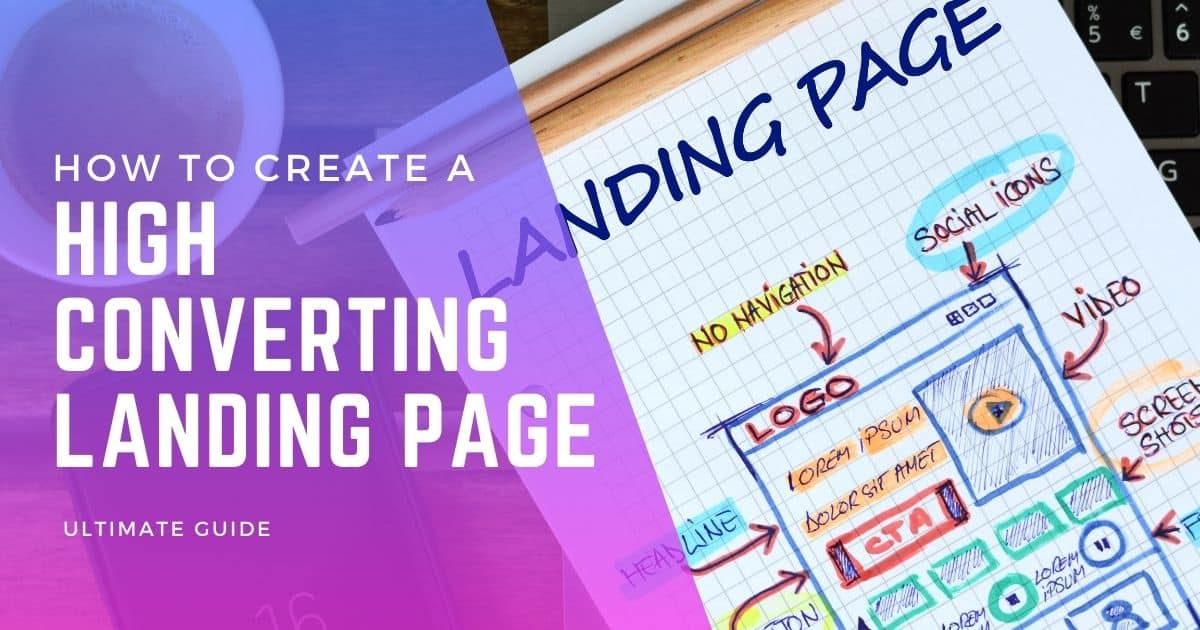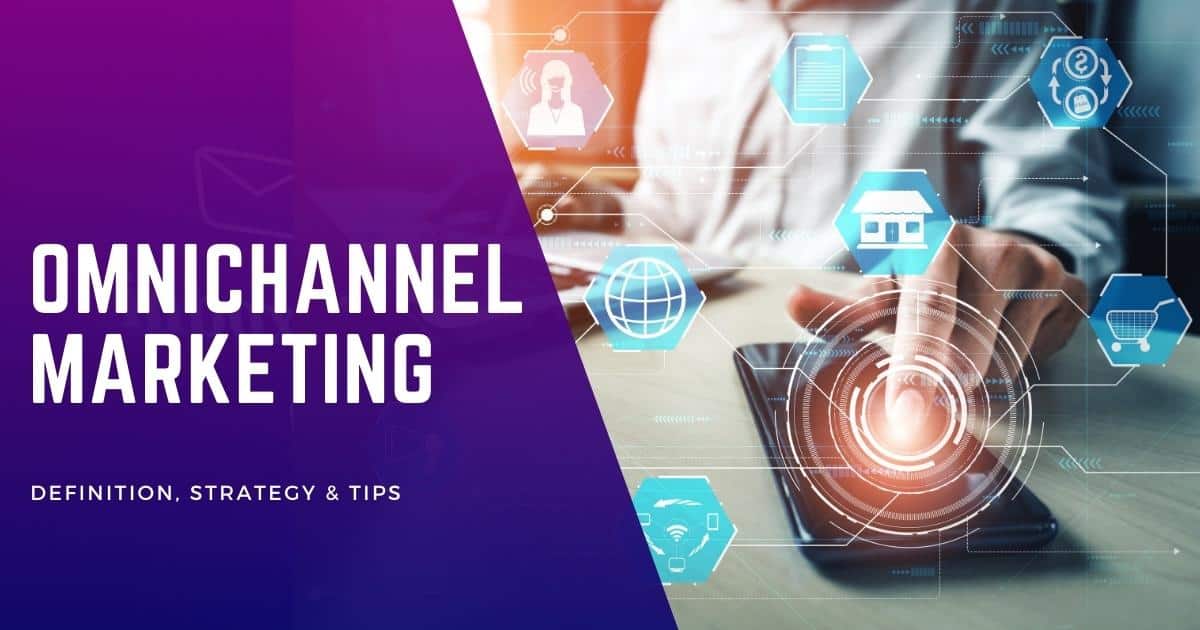You’re here because you know a high-converting landing page is essential for driving conversions and maximizing your business website’s success. Simply put, it’s a specialized web page designed to convert visitors into leads or customers. It’s not just a trend; it’s a must-have in any successful digital marketing strategy.
But mastering the art of high-converting landing pages isn’t a walk in the park. There are hurdles like understanding A/B testing, writing compelling CTAs, and utilizing customer psychology effectively. As someone who has successfully tackled these digital and affiliate marketing challenges, I assure you that this guide will offer actionable steps to improve your landing page performance.
Why is this important? For bloggers, marketers, and entrepreneurs like you, a stellar landing page is the linchpin for generating income and building a robust email list. So, without further ado, let’s get into the nuts and bolts of creating a landing page that actually converts.
Key Elements of High-Converting Landing Pages (with Examples)

To create a high-converting landing page, there are several key elements that you need to consider. These elements will help you capture visitors’ interest, persuade them to take action, and ultimately increase your conversion rates. Let’s explore each element in detail.
Attention-Grabbing Headlines
The headline is the first thing visitors see when they land on your page, so it needs to grab their attention immediately. A compelling headline should be concise and clear and highlight the value proposition of your offer. For example:
- “Unlock Your Potential with Our Exclusive Fitness Program”
- “Get 50% Off on All Orders Today Only!”
By using attention-grabbing headlines like these, you can pique visitors’ curiosity and entice them to explore further.
Persuasive and Compelling Copy
Once you have captured visitors’ attention with a catchy headline, it’s important to keep them engaged with persuasive and compelling copy. Your copy should clearly communicate the benefits of your product or service and address any pain points or concerns your target audience may have.
For instance:
- “Our fitness program is designed by experts to help you achieve your fitness goals faster than ever before.”
- “With our product, you’ll save time and money while enjoying delicious meals every day.”
By highlighting the unique selling points of your offer and addressing customer needs directly, you can effectively persuade visitors to take action.
Visually Appealing Images or Videos
Visual content is crucial in capturing visitors’ attention and conveying information effectively. Incorporating visually appealing images or videos that support your message can significantly enhance the impact of your landing page.
For example:
- Include high-quality images showcasing the features or benefits of your product.
- Embed a video testimonial from a satisfied customer sharing their positive experience with your brand.
These visual elements make your landing page more visually appealing and help visitors visualize the value of your offer, increasing their likelihood of converting.
Clear and Prominent Calls to Action
A call to action (CTA) is a crucial element of any high-converting landing page. It guides users toward the desired action, whether making a purchase, signing up for a newsletter, or downloading an ebook. Your CTA should be clear, prominent, and compelling.
Examples of effective CTAs include:
- “Start Your Free Trial Today!”
- “Get Instant Access Now!”
Consider adding urgency or scarcity elements such as limited-time offers or exclusive discounts to make your CTA even more persuasive. This creates a sense of FOMO (fear of missing out) and encourages visitors to take immediate action.
Building High-Converting Landing Pages: A Step-by-Step Guide

Define Your Goal and Target Audience
To create a high-converting landing page, it is crucial to start by defining your goal and target audience. Determine what action you want visitors to take on the page, whether it’s making a purchase, signing up for a newsletter, or downloading a resource. Understanding your target audience will help you tailor the messaging and design of your landing page to resonate with them.
Create a Clean and Intuitive Layout
A clean and intuitive layout is essential for directing users’ attention to the main message of your landing page. Keep the design simple and uncluttered, ensuring that important elements are prominently displayed. Use white space effectively to create visual breathing room and guide visitors’ eyes towards key information.
Consider using visual hierarchy techniques such as size, color contrast, and positioning to highlight important elements like headlines, call-to-action buttons, or value propositions. Ensure there is a clear flow from top to bottom so that users can easily digest the information presented.
Write Concise and Persuasive Copy
The copy on your landing page should be concise yet persuasive enough to communicate value quickly. Grab visitors’ attention with a compelling headline clearly stating the benefit they will receive by taking the desired action. Use subheadings and bullet points to break up text blocks and make information more scannable.
Focus on addressing pain points or challenges that your target audience may have, highlighting how your product or service can solve their problems. Keep paragraphs short and use language that is easy to understand. Use social proof such as testimonials or case studies to build trust with potential customers.
Optimize for Search Engines
Driving organic traffic to your landing page can greatly increase its conversion potential. Optimize your landing page for search engines by conducting keyword research related to your offering or industry. Incorporate relevant keywords naturally into headings, subheadings, and body copy.
Ensure your landing page loads quickly and is mobile-friendly, as these factors can impact search engine rankings. Use meta tags and alt attributes for images to provide search engines with additional context about your page’s content. Consider creating unique landing pages for different target keywords or campaigns to increase visibility in search engine results.
Choosing the Right Landing Page Builder for Success
It’s crucial to choose the right landing page builder to create a high-converting landing page. Here are some key factors to consider when evaluating different options:
Features, Ease of Use, and Customization Options
When selecting a landing page builder, it’s important to assess its features, ease of use, and customization options. Look for builders that offer various functionalities, such as drag-and-drop editors, pre-built templates, form builders, and A/B testing capabilities. These features will allow you to easily create and optimize your landing pages without needing extensive technical knowledge.
Integration with Other Tools
Consider how well the landing page builder integrates with other tools in your marketing stack. Integration with email marketing software, CRM systems, analytics platforms, and other essential tools can streamline your workflow and help you gather valuable data about your visitors. Seamless integration ensures you can effectively track conversions and nurture leads generated from your landing pages.
Mobile Responsiveness
In today’s mobile-first world, it’s crucial for your landing pages to be mobile responsive. Choose a builder offering responsive design options or mobile-specific templates to ensure your pages look great on any device. This will enhance the user experience and improve conversion rates by catering to the growing number of users accessing websites through their smartphones or tablets.
Analytics Capabilities
Analytics play a vital role in optimizing your landing pages for better results. Look for a builder that provides robust analytics capabilities such as tracking visitor behavior, monitoring conversion rates, and measuring key performance indicators (KPIs). Accessible analytics will allow you to make data-driven decisions and continuously improve the performance of your landing pages over time.
Templates Aligned with Brand Aesthetics and Goals
Aesthetics matter. Ensure the chosen builder offers templates or themes that align with your brand’s aesthetics and goals. Customizable templates can be a great starting point, allowing you to tailor the design elements to match your brand identity and create a cohesive user experience.
Easy Updates and Testing
Flexibility is crucial. Choose a builder that allows you to update and test different variations of your landing pages easily. A good builder should enable you to make changes on the fly without requiring extensive coding or technical knowledge. The ability to run A/B tests will help you identify what works best for your audience, leading to higher conversion rates.
Optimizing Your Landing Page for All Platforms

To create a high-converting landing page, optimizing it for all platforms is crucial. This ensures that your page looks and performs well regardless of whether users access it on a desktop, tablet, or mobile device. Let’s explore some key strategies for optimizing your landing page across platforms.
Design Responsive Landing Pages
Designing responsive landing pages is essential for providing a seamless user experience across different devices. A responsive design allows your landing page to adapt and adjust its layout based on the screen size and the device’s orientation. This means that whether someone is viewing your page on a large desktop monitor or a small smartphone screen, the content will be optimized.
Pros:
- Provides consistent user experience across devices.
- Increases accessibility and reach to potential customers.
Cons:
- Requires additional design and development effort.
- May lead to more complex coding requirements.
Optimize Loading Speed
Loading speed plays a critical role in the success of your landing page. Users expect fast-loading pages; if your page takes too long to load, they may lose interest and abandon it. To optimize loading speed:
- Compress Images: Use compression techniques or online tools to reduce image file sizes without sacrificing quality.
- Minify Code: Remove unnecessary characters from HTML, CSS, and JavaScript files to reduce their size.
- Leverage Caching Techniques: Implement browser caching to store certain elements of your landing page locally on users’ devices, allowing for faster subsequent visits.
Pros:
- Improves user experience by reducing waiting time.
- Increases chances of conversions as users stay engaged with fast-loading pages.
Cons:
- Requires technical knowledge or assistance for implementation.
- May require regular monitoring and updates as website content changes.
Test Across Browsers and Devices
Testing your landing page on various browsers and devices is important to ensure a consistent user experience. Different browsers may interpret code differently, leading to variations in how your page is displayed. Testing across different devices helps identify any layout or functionality issues specific to certain platforms.
Pros:
- Ensures compatibility and consistency across different platforms.
- Helps identify and fix any issues before they impact user experience.
Cons:
- Requires time and effort for thorough testing.
- May require access to multiple devices or browser testing tools.
Implement AMP Technology
Accelerated Mobile Pages (AMP) is an open-source technology that aims to improve the performance of mobile web pages. By implementing AMP, you can create stripped-down versions of your landing pages that load quickly on mobile devices. These pages have simplified HTML and CSS, prioritizing speed over complex design elements.
Pros:
- Enhances mobile performance by reducing loading time.
- Increases visibility in search engine results with AMP-specific features.
Cons:
- Limited design options due to simplified markup.
- Requires additional implementation steps for AMP integration.
By optimizing your landing page for all platforms, you enhance the user experience and increase the likelihood of conversions. Designing responsive pages, optimizing loading speed, testing on different devices and browsers, and implementing AMP technology are key strategies for creating high-converting landing pages that cater to users’ needs regardless of how they access your site.
Crafting Compelling Calls to Action on Your Landing Page

Crafting compelling calls to action (CTAs) is crucial for creating a high-converting landing page. A well-designed CTA prompts users to take the desired action, whether it’s making a purchase, signing up for a newsletter, or downloading an ebook. Here are some effective strategies to make your CTAs stand out and drive conversions.
Use Action-Oriented Language
To encourage users to take action, use action-oriented language in your CTAs. Instead of using generic phrases like “Click here” or “Submit,” opt for more engaging and specific text that tells users exactly what they will get by clicking the button. For example, instead of saying “Submit,” you can say “Get Your Free Trial Now” or “Download Your Guide.”
Using action-oriented language creates a sense of urgency and motivates users to take immediate action. It also sets clear expectations about what users can expect after clicking the CTA button.
Create Urgency
Incorporating time-limited offers or limited availability statements can create a sense of urgency and drive conversions. When visitors see that there is a limited time or quantity available, they are more likely to take immediate action rather than putting it off for later.
Consider adding phrases like “Limited Time Offer,” “Only 10 Spots Left,” or “Offer Ends Soon” near your CTA buttons. This creates a fear of missing out (FOMO) and compels users to act quickly before the opportunity disappears.
Make Your Call to Action Stand Out Visually
A visually prominent CTA attracts attention and increases the chances of conversion. To make your call to action stand out visually:
- Use contrasting colors: Choose colors that contrast with the rest of your landing page design so that the CTA button pops.
- Ensure proper placement: Position your CTA prominently above the fold, easily visible without scrolling. Users should not have to search for it.
- Use whitespace: Surround your CTA button with ample whitespace to make it visually distinct and draw attention to it.
By making your CTA visually appealing and easily noticeable, you increase the likelihood of users clicking on it and taking the desired action.
Test Different Variations
Testing different variations of your call to action text, button design, and placement is essential for optimizing your landing page’s conversion rate. A/B testing allows you to compare two or more versions of your CTA elements to determine which one performs better.
Here are some elements you can test:
- CTA text: Experiment with different wording, such as changing “Buy Now” to “Get Started” or “Join Today.”
- Button design: Try different button shapes, sizes, colors, and styles to see which combination attracts more clicks.
- Placement: Test placing the CTA at different locations on your landing page, such as above the fold, in the middle of the content, or at the end.
By continuously testing and optimizing your CTAs, you can refine them over time and improve their effectiveness in driving conversions.
Enhancing User Experience with Streamlined Navigation and Web Forms

Simplifying navigation and optimizing web forms are essential to creating a high-converting landing page. Removing unnecessary links and distractions can provide a seamless user experience that guides visitors toward your desired conversion goal.
Simplify navigation by removing unnecessary links and distractions from your landing page.
Simplicity is key. By decluttering your page and eliminating unnecessary links and distractions, you can focus your visitors’ attention on the main objective: converting them into customers or leads.
- Remove excessive navigation menus: Too many navigation options can overwhelm users and lead them away from the intended conversion path. Instead, streamline your navigation by including only the most relevant links guiding users towards action.
- Minimize external links: While providing credibility through external sources is important, too many outbound links can divert users’ attention away from your primary conversion goal. Consider limiting external links or opening them in new tabs to ensure users stay focused on completing the desired action.
- Optimize mobile responsiveness: With mobile usage on the rise, it’s crucial to optimize your landing page for smaller screens. Ensure all elements are easily accessible and visible without excessive scrolling or zooming.
Use intuitive web forms that ask for essential information only, reducing friction for users.
Web forms capture valuable user data and convert visitors into leads or customers. However, if not optimized properly, they can create friction and deter users from completing the form submission process. Here are some tips to consider:
- Keep forms concise: Long and complex forms can be intimidating for users. Only ask for essential information that is necessary for achieving your conversion goals. The shorter the form, the higher the chances of completion.
- Utilize autofill options: Implementing autofill functionality helps streamline form completion by pre-filling certain fields based on users’ previous entries. This saves time and effort for users, making the form submission process more convenient.
- Integrate social media login: Another way to reduce form completion friction is by offering social media login options. By allowing users to sign in using their existing social media accounts, you eliminate the need for them to fill out lengthy forms manually.
- Provide clear instructions: Clearly communicate the required information and how users should complete the form. Use concise labels, placeholders, and tooltips to guide users through each field. Consider adding inline validation or real-time error messages to help users promptly correct mistakes.
Over to You
You’ve got the tools to create a high-converting landing page now. Remember, the secret sauce includes a catchy headline, good words that sell, cool pictures, and making folks trust you. So pick the best landing page builder that fits your needs, and ensure your page looks good on all the gadgets people use.
Don’t just stop there. Make your CTAs pop and keep things simple so folks can get around easily. Why? Because all this will get you more clicks, sign-ups, or whatever you’re after. So, what are you waiting for? Time to get more conversions!
FAQs
What is a high-converting landing page?
A high-converting landing page is a specialized web page designed to convert visitors into leads or customers via capturing email addresses or facilitating sales. It employs persuasive elements like compelling headlines, targeted copy, and clear calls to action to optimize visitor-to-lead or visitor-to-customer conversion rates.
How do I choose the right landing page builder?
Selecting the right landing page builder involves evaluating features like drag-and-drop functionality, template variety, A/B testing capabilities, responsive design capabilities for mobile optimization, and customer support availability. Also, consider integration with CRM and email marketing platforms. Scrutinize pricing plans to ensure they align with your budget and business scale.
What are some best practices for crafting compelling calls to action?
Best practices for crafting compelling calls to action (CTAs) include using action-oriented verbs, maintaining clarity, and creating a sense of urgency. A/B testing different CTA text and designs can optimize performance. CTAs should be visually distinct and strategically placed to guide users toward desired actions.
Why is user experience important for landing pages?
User experience on landing pages is crucial for achieving high conversion rates. Well-designed, easy-to-navigate pages encourage visitors to complete desired actions, such as purchasing or signing up for a newsletter. Poor user experience can lead to high bounce rates, negatively impacting conversions and search engine rankings.
How often should I test my landing pages?
Testing frequency for landing pages depends on various factors, such as traffic volume and conversion goals. However, it’s advisable to run A/B tests at least once a month to optimize performance continuously. Frequent testing allows for data-driven adjustments and maximizes conversion rates.



